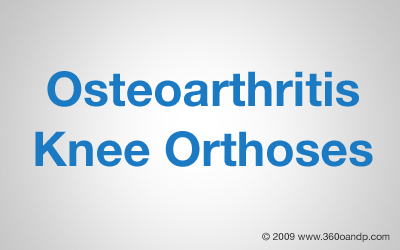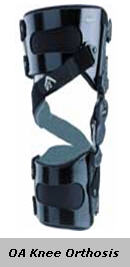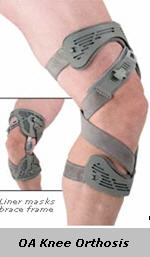

The design of the osteoarthritic (OA) knee orthosis must address several factors. Control of instability due to joint laxity must be considered. Flexible knee arthritic deformities must be considered through either varus or valgus corrective forces. Anterior and posterior instabilities can also be addressed by corrective force application.
ASSOCIATED CONDITIONS
Osteoarthritis
WEARING PROTOCOL
Your physician will outline your wearing protocol, but normally the OA knee orthosis is worn when you are up and ambulating.
DON AND DOFF INSTRUCTIONS
§ Bend you knee at approximately 30 degrees. Apply the brace to the knee.
§ Correct hinge placement is very important.
§ The strap behind the knee (crease of knee) is first strap to tighten. This insured the hinge is in the proper position.
§ The majority of the OA knee braces have numbered straps. Follow the manufacturers suggestions as to when sequence to tighten straps.
§ Do not over-tighten.
§ The secret to keeping the OA brace from migrating is to make sure the back strap (middle is in the crease of the knee and over the top of the calf).
§ The brace will need to be repositioned and retightened as you stand as your muscle mass changes from sitting to standing.
 CARE
CARE
§ Manufactures instructions should be followed.
§ Pads can be washed.
§ Do not use WD40 or machine oil on the joint.
§ Graphite spray (hardware store in key department) is a dry lubicant that will keep the joint lubricated.
§ If you are diabetic, recheck for red marks or blisters. If any blister or sore areas are noted, remove brace and contact your Orthotist as soon as possible.
§ Relief of OA pain can be immediate or may take several adjustments before relief is noted. Your orthotist will offer recommendations as to return visits for adjustments.